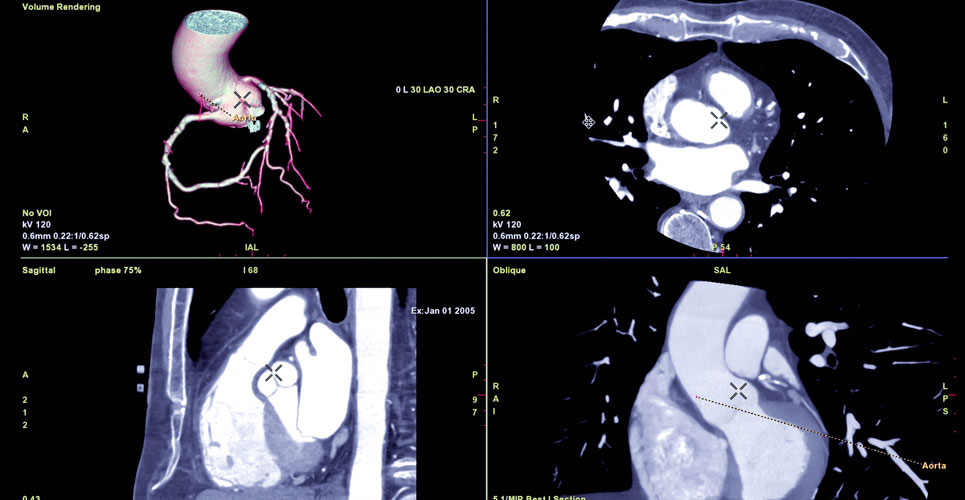Early use of CTCA in those with suspected ACS had no overall effect on one-year cardiac outcomes in intermediate risk patients.
The presence of acute chest pain accounts for approximately 10% of non-injury-related emergency department visits. Although not all chest pain has a cardiac origin, nevertheless, all patients will be routinely assessed for acute coronary syndrome (ACS). While appropriate treatment is promptly administered to those with obvious clinical signs and symptoms of ACS, in those deemed to be at either a low or intermediate risk, the usual practice is observation and further testing only if ACS is suspected. One strategic approach to the assessment of low risk ACS patients, is early computed tomography (CT) coronary angiography (CTCA). This technique has been increasingly used to assess patients with stable chest pain because it has high sensitivity and specificity for the detection of coronary heart disease. Within an emergency department, CTCA therefore allows for a rapid evaluation of patients presenting with acute chest pain. In fact, one systematic review concluded that the use of CTCA is associated with a reduced length of hospital stay compared to usual care. Furthermore, a 2018 study examining the use of CTCA in patients with stable chest pain, found that over a 5-year period, there was a significantly lower rate of death from coronary heart disease or non-fatal myocardial infarction compared to standard care. However, while studies have focused on patients at low risk of ACS, whether early CTCA is of value in those patients deemed to be at an intermediate risk of ACS is less clear.
In assessing the value of early CTCA in patients presenting with acute chest pain and at an intermediate level of risk for acute coronary syndrome, researchers from Edinburgh University, established the RAPID CTCA study. The trial enrolled adult patients with suspected or a provisional diagnosis, of acute coronary syndrome and prior coronary heart disease. These individuals where then randomised 1:1 after admission to hospital to early CT coronary angiography with standard care or standard care alone. The primary outcome was the time to the first event of all-cause death or a subsequent non-fatal type 1 (spontaneous) or type 4b (related to stent thrombosis) myocardial infarction at one-year. Secondary outcomes included the cause of death and subsequent myocardial infarction.
Findings

The study recruited and randomised 1748 patients with a mean age of 61.6 years (64% men), of whom 877 received early CTCA. Overall, 89% of patients had chest pain as their primary complaint, 34% had existing coronary heart disease, 57% raised cardiac troponin levels and 61% an abnormal ECG. The primary outcome all cause death or non-fatal myocardial infarction (both types) occurred in 5.8% of those in the early CTCA group and 6.1% of those assigned to usual care (adjusted hazard ratio, aHR = 0.91, 95% CI 0.62 – 1.35, p = 0.65). Furthermore, there were no significant differences in any of the secondary outcomes. The need for invasive coronary angiography occurred in 54% of those in the CTCA group and 60.8% in the usual care group (aHR = 0.81, 95% CI 0.72 – 0.92, p = 0.001).
The authors concluded that early CTCA for patients with an intermediate risk of ACS did not alter overall coronary therapeutic interventions or one year clinical outcomes but did reduce the need for invasive angiography.
Citation
Gray AJ et al. Early computed tomography coronary angiography in patients with suspected acute coronary syndrome: randomised controlled trial. BMJ 2021

